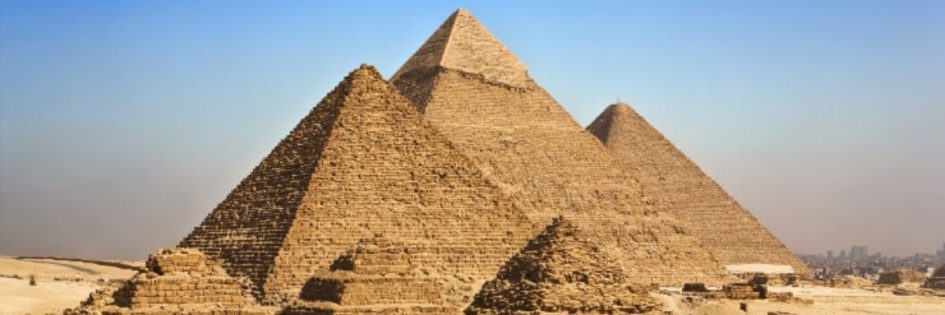The Great Pyramid of Giza, also known as the Pyramid of Khufu or the Pyramid of Cheops, is one of the most iconic landmarks in the world. This ancient marvel, located on the Giza Plateau in Egypt, has captured the imaginations of millions of people for centuries.
With its massive size, mysterious construction, and rich history, the Great Pyramid of Giza continues to be a source of fascination and wonder for people around the globe. In this article, we will delve into the Great Pyramid of Giza facts, history, and experience of visiting this awe-inspiring wonder of the ancient world.
Unearthing the Facts: Great Pyramid of Giza
The Great Pyramid of Giza is the largest of the three pyramids on the Giza Plateau. It is believed to have been constructed during the reign of Pharaoh Khufu in the 26th century BCE. Standing at an impressive height of approximately 147 meters (481 feet), the true Great Pyramid Of Giza height was originally covered with a smooth limestone casing that has mostly eroded over time.
However, despite the weathering effects of thousands of years, the Great Pyramid of Giza still stands tall and dominates the surrounding landscape.
Great Pyramid Secrets
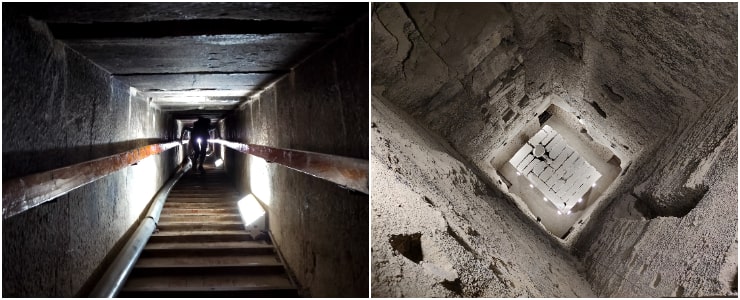
Inside the Great Pyramid of Giza, one can find that it contains a complex system of corridors, chambers, and passages that have puzzled researchers and historians for centuries. The pyramid was designed with a descending passage leading to an underground chamber, as well as an ascending passage that leads to the burial chamber.
The burial chamber is the final resting place of Pharaoh Khufu. It houses an empty sarcophagus, leading to the mystery of the pharaoh’s actual burial location. The intricate design and precise engineering of the interior of the pyramid continues to be a subject of awe and speculation, with many theories surrounding its purpose and construction.
Unravelling the History: Great Pyramid of Giza
The history of Pyramid of Giza dates back over 4,500 years, making it one of the oldest surviving structures in the world. The pyramid was built during the Old Kingdom period of ancient Egypt, and it is estimated that it took approximately 20 years to complete.
The exact methods used to construct the pyramid are still debated among historians and researchers, with various theories ranging from the use of ramps to levering and counterweights. Despite the lack of definitive evidence, the construction of the Great Pyramid of Giza is a testament to the advanced architectural and engineering skills of the ancient Egyptians.
Recent Post
- Things to do in Saudi Red Sea: Why It Should Be Your Next Travel Choice?

- How to Plan a Trip to Lahaul and Spiti Valley: Journey Full of Adventures

- Top Waterfront Activities & Things to Do in Washington, DC

Visiting the Pyramids of Giza: A Journey through Time
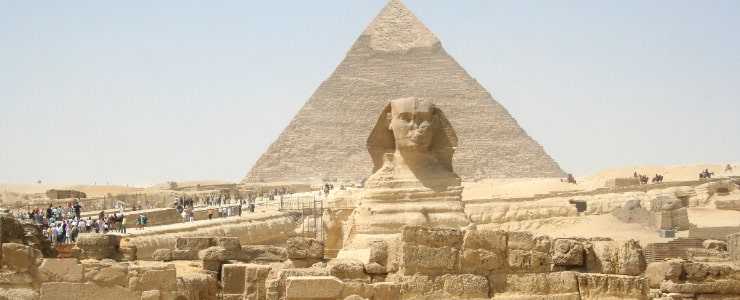
For travellers and history enthusiasts alike, visiting the Pyramids of Giza is a once-in-a-lifetime experience. The sheer magnitude and grandeur of these ancient structures leave visitors in awe of the ingenuity and craftsmanship of the ancient Egyptians.
Upon arriving at the Giza Plateau, visitors are greeted by the majestic sight of the Great Pyramid of Giza. It rises against the horizon, along with the two smaller pyramids of Khafre and Menkaure, and the famous Sphinx.
Trip to the Pyramids of Giza: An Adventure of a Lifetime
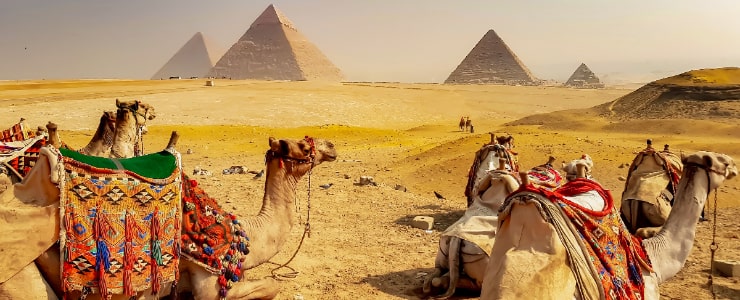
A trip to the Pyramids of Giza
is an adventure of a lifetime, allowing visitors to step back in time and immerse themselves in the mysteries and wonders of ancient Egypt. Exploring the Giza Plateau and its surrounding areas, visitors can learn about the history, culture, and mythology of ancient Egypt through guided tours, educational exhibits, and interactive displays.
From marvelling at the massive size of the pyramids up close to learning about the intricate burial rituals and beliefs of the ancient Egyptians, a trip to the Pyramids of Giza is a truly enriching and awe-inspiring experience.
Suggested Read: Famous Things To Do In Cairo 2023 – TBO Academy
Great Pyramid of Giza Virtual Tour: Exploring the Pyramid from Anywhere
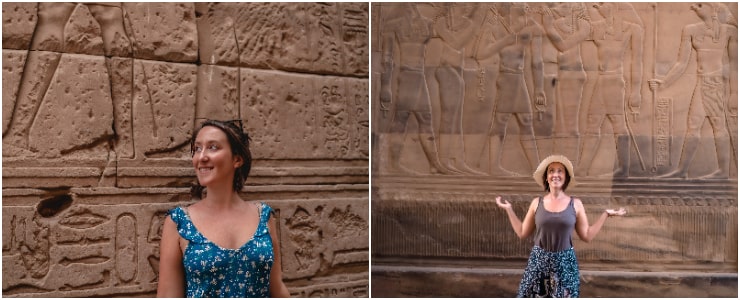
For those who may not have the opportunity to visit the Pyramids of Giza in person, technology has made it possible to explore the Great Pyramid of Giza through virtual tours. With advancements in virtual reality and online platforms, visitors can now embark on a virtual journey to the pyramid right from the comfort of their own homes.
Through virtual tours, one can get a 360-degree view of the pyramid, explore its interior chambers, and learn about its history and significance. This virtual experience allows for a unique and immersive way to appreciate the magnificence of the Great Pyramid of Giza virtual tour, even from afar.
Cost to Visit the Pyramids of Giza: Planning Your Trip
When planning a trip to the Pyramids of Giza, it’s essential to consider the cost of visiting the Pyramids of Giza. The admission fee to enter the Giza Plateau, which includes access to the Great Pyramid of Giza, varies depending on the type of ticket and nationality of the visitor.
As of 2023, the general admission fee for foreigners is approximately 240 Egyptian pounds (equivalent to around 7.8 dollars), while Egyptian nationals and residents enjoy a discounted rate. In addition to the admission fee, visitors may also need to budget for additional expenses, such as transportation, tour guides, and souvenirs. It’s advisable to research and plan ahead to ensure a smooth and enjoyable trip to the Pyramids of Giza.
Best Time to Visit the Great Pyramid of Giza: Weather and Crowds
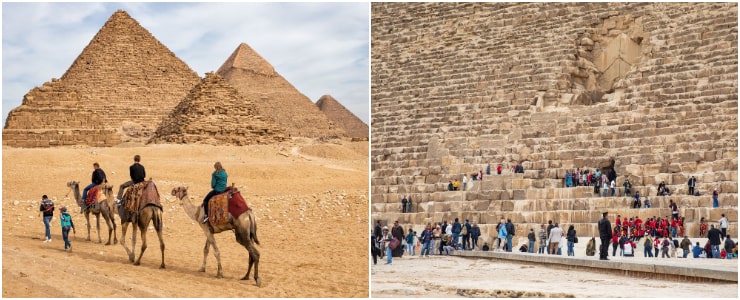
The best time to visit Great Pyramid of Giza largely depends on personal preferences, weather conditions, and the level of tourist crowds. The peak season for tourists at the Giza Plateau is typical during the cooler months of October to April when the weather is mild and pleasant.
During this time, the skies are usually clear, providing excellent visibility for exploring the pyramids and taking memorable photos. However, the peak season also means larger crowds, long queues, and higher prices for tours and accommodations.
If you prefer to avoid crowds, visiting during the shoulder seasons of May to September can be a good option. It’s important to come prepared with proper clothing, sun protection, and plenty of water, regardless of the time of year you choose to visit.
Top sights near Pyramids of Giza
- The Great Sphinx of Giza
- The Pyramid of Khafre
- The Pyramid of Menkaure
- The Solar Boat Museum
- Panoramic Views from the Giza Plateau
The Great Pyramid of Giza is an awe-inspiring testament to the ancient civilization of Egypt. Its massive size, intricate design, and rich history continue to captivate the minds and hearts of people from all over the world. Whether you are able to visit the pyramid in person or embark on a virtual tour, exploring the mysteries and wonders of the Great Pyramid of Giza is an unforgettable experience.
From marvelling at its grandeur, delving into its interior chambers, learning about its history, and appreciating its cultural significance, a journey to the Pyramids of Giza is a trip back in time to one of the most iconic landmarks in human history. So, whether you’re an adventurer, a history enthusiast, or simply someone seeking to be awe-inspired, the Great Pyramid of Giza awaits you with its timeless allure.
Pyramids of Giza FAQ’s
Q1. Why is the Giza Pyramid famous?
A1. The Pyramids of Giza are the world’s largest and most recognisable pyramid formations. They were constructed to honour several Pharaohs of Egypt’s fourth reigning dynasty during the Old Kingdom period. The Old Kingdom, which lasted from 2686 to 2181 BCE, was the first major age of Egyptian civilisation.
Q2. Is the temperature within the pyramids high?
A2. The interior temperature of the pyramids is constant at 20 degrees Celsius, which is identical to the average global temperature. No matter how hot it gets outside, the temperatures within the pyramids stay constant at 20 degrees Celsius.
Q3. How tall is the Great Pyramid of Giza?
A3. The Great Pyramid of Giza stands at a height of approximately 147 meters (481 feet).
Q4. What is inside the Great Pyramid of Giza?
A2. The Great Pyramid of Giza contains a complex system of corridors, chambers, and passages. It has a descending passage leading to an underground chamber and an ascending passage that leads to the burial chamber. The burial chamber is the final resting place of Pharaoh Khufu, and it houses an empty sarcophagus.


